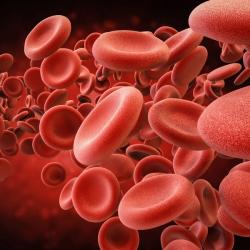
OR WAIT null SECS
Reducing Aspirin Use Improves Outcomes in Patients with AF, VTE Receiving Warfarin
A reduction in aspirin use was associated with significantly less bleeding and health care use, without an increase in thrombotic outcomes.
An anticoagulation clinic–based aspirin deimplementation intervention was linked to a significant reduction in excess aspirin use among patients taking warfarin for atrial fibrillation (AF) and/or venous thromboembolism (VTE).
The observed reduction in aspirin use was additionally associated with reductions in bleeding outcomes, without a subsequent increase in thrombotic outcomes.
“These findings highlight the need for greater aspirin stewardship among patients receiving warfarin for anticoagulation,” wrote study author Geoffrey D. Barnes, MD, MSc, Division of Cardiovascular Medicine, Department of Internal Medicine, University of Michigan. “Our successful intervention across multiple health systems, with different patient populations and clinical structures, could serve as a national model for reducing excess aspirin use.”
Each of the 6 clinical sites of the Michigan Anticoagulation Quality Improvement Initiative (MAQI) implemented an intervention to reduce high-risk aspirin use. Barnes and colleagues evaluated the pre-intervention and post-intervention proportion of patients receiving aspirin without a clear indication, with data collected from a period between January 2010 until December 2019.
Prior research indicates that a combination of warfarin and aspirin therapy may lead to greater risk by increasing bleeding events without a clear reduction in thrombotic outcomes. Often, patients continue to receive aspirin even when the anticipated risk exceeds the benefit.
According to the investigators, screening could determine if a patient’s indication for aspirin use was unclear or inappropriate, at which point aspirin use could be discontinued with the approval of the managing physician or specialist. The indications for aspirin use were assessed at enrollment for the pre-intervention cohort and assessed at enrollment or the first follow-up after implementation of the intervention for the post-intervention cohort.
The MAQI followed up a total of 6738 patients treated with warfarin without an indication for aspirin (mean age, 62.8 years; 3160 men [46.9%]) for a median of 6.7 months.
Study data show aspirin use saw a slight decrease from the baseline mean use of 29.4% (95% CI, 28.9% - 29.9%) to 27.1% (95% CI, 26.1% - 28.0%) during the pre-intervention period, 24 months prior to the intervention.
Following the intervention into the post intervention period, the investigators observed a significantly accelerated decrease in aspirin use at a mean use of 15.7% (95% CI, 14.8% - 16.5%). This trajectory was noted as steeper than that of the pre-intervention period (P = .001 for slope before and after intervention).
The intervention was further associated with a significant reduction in major bleeding events per month (0.31% vs 0.21%; P = .03 for difference in slope before and after intervention). However, there was no significant change in the mean percentage of patients with a thrombotic event (0.21% vs 0.24%; P = .34 for difference in slope).
In further analyses, a reduction in aspirin use (24 months before intervention) was associated with a decrease in the mean percentage of people having any bleeding event (2.3% vs 1.5%; P = .02) or major bleeding event (0.31% vs 0.25%; P = .001).
Citing a lack of guideline support for aspirin, study investigators questioned why a plurality of patients treated with warfarin were receiving concomitant aspirin without any strong reason for its use.
“Given that aspirin is not a prescription medication, it could be postulated that clinicians may not always be aware that patients are taking aspirin, which is a barrier to aspirin-deprescribing efforts,” Barnes added.
The study, “Assessment of an Intervention to Reduce Aspirin Prescribing for Patients Receiving Warfarin for Anticoagulation,” was published in JAMA Network Open.


